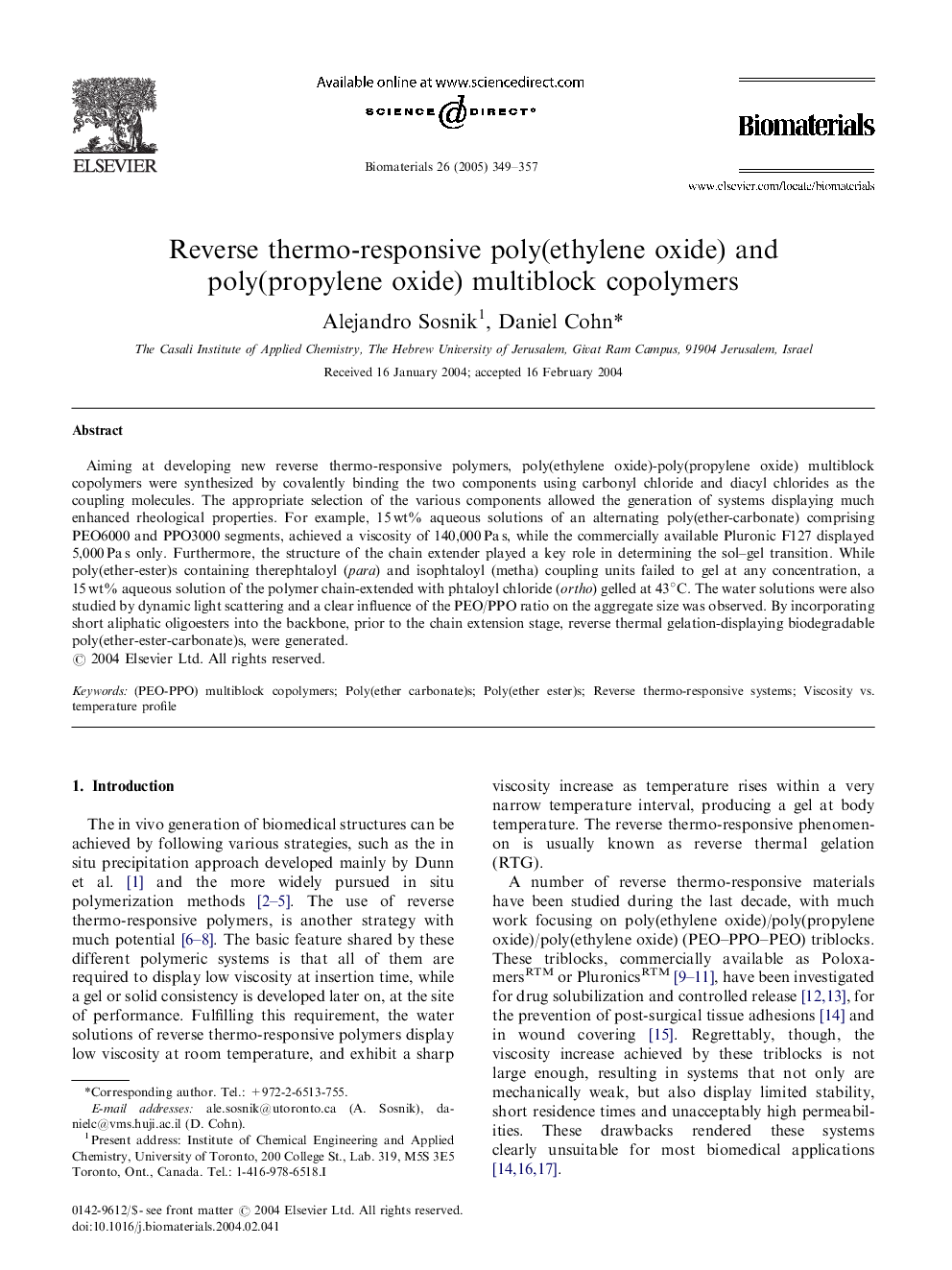| Article ID | Journal | Published Year | Pages | File Type |
|---|---|---|---|---|
| 10230123 | Biomaterials | 2005 | 9 Pages |
Abstract
Aiming at developing new reverse thermo-responsive polymers, poly(ethylene oxide)-poly(propylene oxide) multiblock copolymers were synthesized by covalently binding the two components using carbonyl chloride and diacyl chlorides as the coupling molecules. The appropriate selection of the various components allowed the generation of systems displaying much enhanced rheological properties. For example, 15 wt% aqueous solutions of an alternating poly(ether-carbonate) comprising PEO6000 and PPO3000 segments, achieved a viscosity of 140,000 Pa s, while the commercially available Pluronic F127 displayed 5,000 Pa s only. Furthermore, the structure of the chain extender played a key role in determining the sol-gel transition. While poly(ether-ester)s containing therephtaloyl (para) and isophtaloyl (metha) coupling units failed to gel at any concentration, a 15 wt% aqueous solution of the polymer chain-extended with phtaloyl chloride (ortho) gelled at 43°C. The water solutions were also studied by dynamic light scattering and a clear influence of the PEO/PPO ratio on the aggregate size was observed. By incorporating short aliphatic oligoesters into the backbone, prior to the chain extension stage, reverse thermal gelation-displaying biodegradable poly(ether-ester-carbonate)s, were generated.
Related Topics
Physical Sciences and Engineering
Chemical Engineering
Bioengineering
Authors
Alejandro Sosnik, Daniel Cohn,
